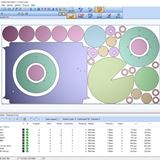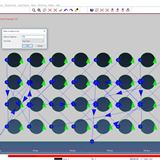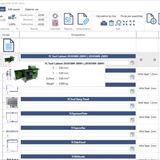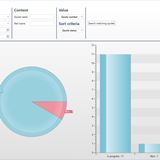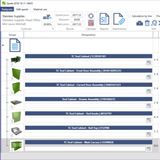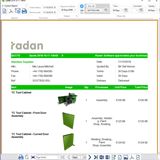RADAN Version 2019 R1
Radquote | Access
A significant update in RADAN 2019 R1 makes the popular Radquote function easily accessible to different categories of employees. Radquote users are generally not the staff who program machine tools with RADAN. So Radquote is made completely standalone and easy to use by anyone – automatically using machine technology for the quote, with Radquote calculating the accurate cycle time and the best material usage. This achieves an accurate quote every time, providing consistency and transparency, irrespective of who is producing the quote.
Radquote | Quoting Aspects
Radquote not only competitively calculates costing on sheet metal, but all aspects of quoting are now included – such as cutting, bending, welding, painting and assembly.
It’s also been enhanced to effectively deal with DXF files and also, soon, 3D files, as well as geometry that hasn’t been created yet. For example, if a component contains a number of holes, Radquote can produce a quote based on that information, without needing to know exactly where the holes are.
Radquote | ERP Systems
Radquote also links seamlessly with most ERP systems, particularly WORKPLAN. This means that if there’s a material price rise recorded in the ERP system, Radquote will utilise that information.
RADAN CAD/CAM Enhancements
RADAN CAD/CAM is a key area where click habits have been reviewed and advanced for simpler use – saving time and refining business processes. Part preparation is a time-consuming task and some operations have been reduced from two clicks to one, to apply settings.
Nest Mode | Grab Part
The Grab Part In Nest mode function, to change a part in nesting mode, has also been simplified saving average users an estimated minimum of 50 clicks per day.
Material Cost Saving
2019 R1 also provides material cost saving through importing remnants via the Raster to Vector function, and a stronger web option. Import a remnant via Raster to Vector can be used to eliminate wasting expensive remnants, such as specialised metals which can’t be scrapped. Users can now take a photograph of the sheet and bring it into the CAM system, giving the approximate dimensions, to use later. The system then draws a remnant with that shape cut out and you can use it again.
Batch Nest Function Enhancements
The Batch Nest function now benefits from a stronger web option which allows parts to be nested evenly across a sheet. This is optimised for the best cut option, where nothing else will fit on the sheet, and is particularly useful to stop sheets moving on punch presses, while preventing heat build-up on lasers by ensuring an adequate space between parts.
Radbend Updates
Three important updates feature in Radbend, including: improved automatic fingerstop positioning for sharp-angled parts; pre-selection of the bend process depending on the tool selection; and filter tool profiles.
Filter Tool Profiles: While every tool purchased is in Radbend’s tool library, it can also now show tools filtered according to manufacturer. It also shows all the tools capable of producing the required bend. To reduce that list even further, you can set additional filters. ‘Available,’ is for all tools in the system; ‘Valid’ are tools that would fit the job; and ‘Mapped’ shows tools which are already programmed and ready to go onto a specific machine. Mapped tools are particularly valuable for identifying what tool is available on which machine and in saving time, as setting up a tool involves measuring, and maybe even carrying out test bends, which can take around 20 minutes.
Radm-ax Updates
Radm-ax developments include automatic heat avoidance, hazard avoidance and common line cutting. A new cutting sequence for heat avoidance has been added to prevent heat build-up in the component. Improvements to hazard avoidance, calculating a better and safer path around hazards, and an increase in the ability to cut more difficult angles, such as 30-degree angles, with common line cutting, will also benefit production times.








